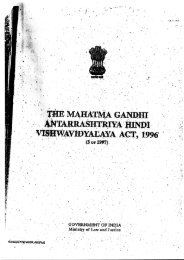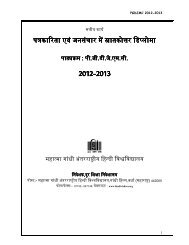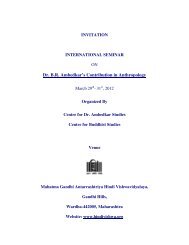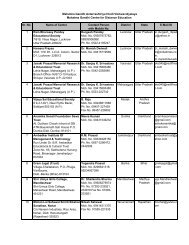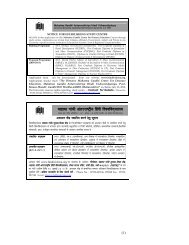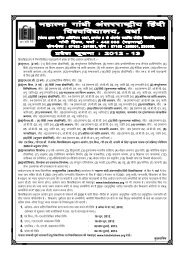Mamta Kalia
Mamta Kalia
Mamta Kalia
You also want an ePaper? Increase the reach of your titles
YUMPU automatically turns print PDFs into web optimized ePapers that Google loves.
Modern Architecture’, 1977), implying<br />
post-modern pluralism. His perspective<br />
is ‘committed to engaging current issues<br />
to changing the present’ but he has no<br />
interest in Avant- gardist principle of<br />
‘continual innovation or incessant<br />
revolution’. He is inclined to metaphysical<br />
buildings, ‘ the vernacular’, ‘ historical<br />
memory’ and ‘local context’ though<br />
indulging in modernist strategies like<br />
irony and parody. Jenks tries to get<br />
over the modernist elitism not by<br />
dropping it but ‘by extending the language<br />
of architecture in many different ways<br />
into the vernacular, towards tradition<br />
and the commercial slangs of the street’thus<br />
his double-coded architecture speaks<br />
both to the elites and the ordinary people<br />
by ‘extending’ modernism.<br />
Subsequently Robert Stern (‘The<br />
Doubles of Post Modern’, 1980) talked<br />
of ‘traditional’ post-modernism and<br />
‘deconstructionist’ or ‘schismatic’ postmodernism.<br />
Traditional post-modernism<br />
depends on representational as opposed<br />
to ‘abstract or conceptual modes’ and<br />
it ‘opens up artistic production to a<br />
public role which modernism, by virtue<br />
of its self-referential formal strategies,<br />
had denied itself’- here he finds a ‘genuine<br />
and unsentimental humanism’ that<br />
expresses itself in a deeply felt sense<br />
of ‘social and cultural responsibility’.<br />
Thus, to him, post-modernism implies<br />
humanism in art–an act of<br />
communication, rather than of<br />
production or revelation, Similarly<br />
Heinrich Klotz’s post-modernism<br />
(‘History of Post-modern Architecture’,<br />
1988) is more humane with ‘fictional<br />
representation’, ‘ poetry, ‘improvisation<br />
and spontaneity, ‘history and irony’, and<br />
‘contextualism’.<br />
From above it may be inferred<br />
(Bertens) that there have been, at least,<br />
three types of post –modernism:<br />
a) a return of representation and<br />
narrative-especially in painting;<br />
b) an attack on representation and<br />
narrative (Barthes, Derrida)denial<br />
of presence, origins and<br />
coherent subject;<br />
c) a non–discursive immediacy, a<br />
sacred fullness- artist and his art<br />
is seen in shamanistic terms, a<br />
dialogic space is preferred to a<br />
monolithic mode.<br />
F.J. Schuurman, in his book, ‘Beyond<br />
the Impasse’ (1993), talks of<br />
heterogeneity of post-modernism due to<br />
its three sub-routes:<br />
a) Neo-conservative communitarianism-<br />
here social anomie is<br />
opposed by a return to tradition<br />
and history- some kind of<br />
romanticism.<br />
b) Progressive communitarianism-<br />
In lieu of socialism, search for<br />
other types of local sources of<br />
resistance against governing<br />
power and knowledge system- new<br />
social movements. Foucault wants<br />
to involve there even the hospital<br />
patients, prisoners and gypsies.<br />
April-June 2010 :: 73




